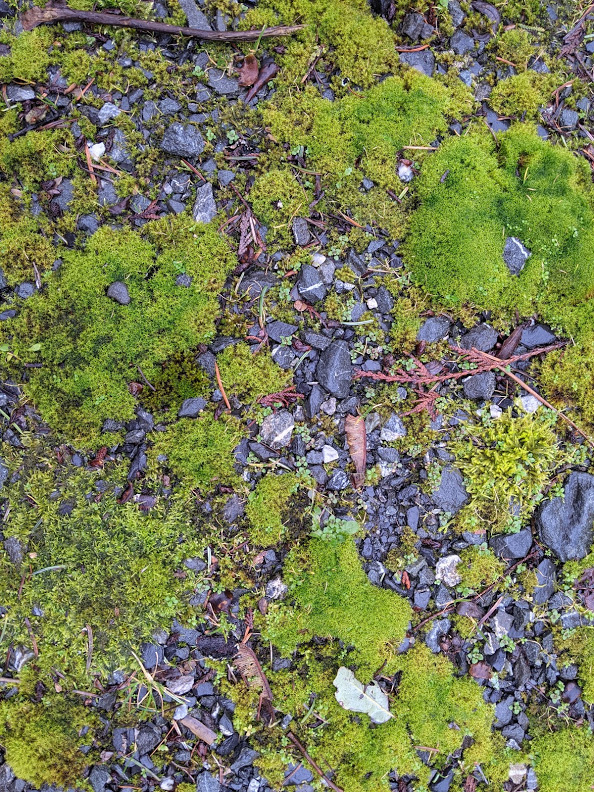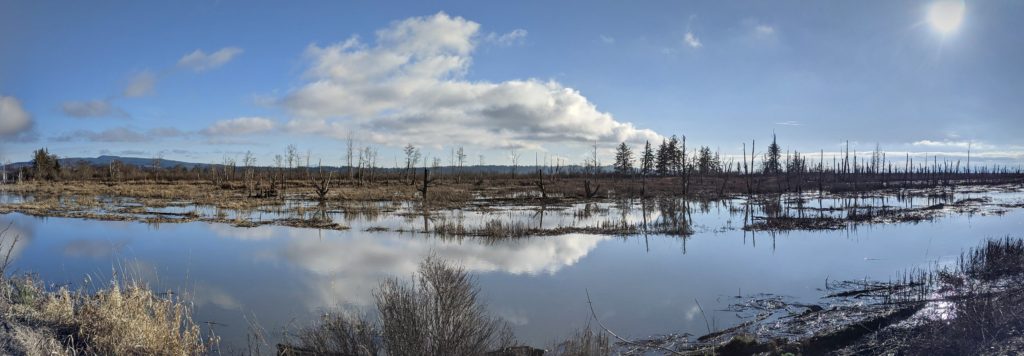
This is 11th in a series of posts about the tidal wave of moving online in Pandemic-Covid-19. #1, #2, #3, #4 , #5 , #6, #7, #8, #9 and #10. This post explores peer assistance and mutual support practices, building on a blog post last Spring about virtual peer assists. This is also in preparation for a KM4Dev Knowledge Café on February 18th on this topic. (Please, join us! 7:00AM PST, 16:00 CET)
We Are Connected
My colleague and friend, Helen Gilman, pointed me to a tremendous book by Robert McFarlane, “Underland: A Deep Time Journey.” Among other fascinating topics, McFarlane writes about how trees “talk to” and support each other through underground fungal networks. (See Suzanne Simard’s Ted Talk.) This reminded me that we often operate as apparent autonomous workers in our jobs — single trees — yet in fact our networks sustain and support us. We are part of a bigger whole without which we could not exist. Like looking just above the forest floor and not below, we miss the practices that generatively connect us. Unseen, but present. With this blog post I want to “observe” some of those practices we call “peer assistance.”
Here is the baseline I offer. Our greatest knowledge resource is each other. The knowledge we each carry, the perspectives and experiences around our knowledge, and our diverse contexts, gives us an immense, and decentralized resource.
Assistance: With useful peer to peer (P2P) practices, knowledge can be more accessible, freed from centralized organizational boundaries and gatekeepers. P2P practices can subvert the power of large institutions that can dominate with or perpetuate one view of the world, one knowledge perspective. P2P approaches can step around those who wish to protect, prioritize, or hoard knowledge. They can help us be aware and address racism and colonialism that has been baked into so many of our “expert-centric” practices.
Support: At a human level, P2P practices can engage each of us. They can respect the fact that we all have useful knowledge. We might feel a bit more empowered and a bit less vulnerable working at the peer-to-peer level rather than trying to show up in front of a large organization. Feel a little more human. We, and our knowledge, might be unleashed in more generative ways.
I’m interested in these P2P knowledge liberation practices, and particularly these days, doing them online. This post explores a common form of P2P, peer assists, and how we might expand the repertoire beyond them, and to include support as well as assistance.
Peer Assistance (and support!)

Peer assistance is NOT new. In the knowledge management (KM) world, it has been popularized by the Peer Assist format. (Doing them online is also not new, but it matters now, more than ever, with the pandemic.) I like the definition from ODI building on Purcell and Collison’s work that describes a peer assist as a “learning before doing” activity.” Learning before doing, or the process of learning before undertaking a task, activity or project.” (Learning AFTERWARDS with peers could be exemplified by an After Action Review.)
A common format for peer assists is to have the assistee – the person who needs assistance — convene a gathering with people they invite who may have useful knowledge or expertise to address the assistee’s challenge or task. “You know more than I do, please help me!”
There is an explicit recognition in peer assists that knowledge is power. Knowing “the right thing” to do is a central component. And yet, our challenges are not always about not knowing what to do, but moving beyond feeling alone and vulnerable when risking doing what we perceive we should. Knowing WHAT to do is different than doing it. Knowing HOW do do something is different than doing it. Understanding the context for doing it. Having the mindset to do it. Confidence? Enough “safety” to take the risk? This is where mutual support comes in. Recognizing that we are humans working with this knowledge.
P2P may also help us with another huge challenge we face. Bias, or more accurately, biases! An “expert-driven” view of assistance may be implicitly propagating the bias of dominant actors or cultures. It could deprioritize or even bury local and indigenous knowledge. Could P2P approaches help us a) be aware and b) step out of these traps?
KM4Dev, one of my core communities of practice, has been engaged in ongoing conversations both about decolonisation of KM, and, as always, about specific KM practices. (See these posts from Bruce Boyes and Charles Dhewa.) For example (and forgive the broad generalization) when we look at the implicit prioritization of recognized expertise, we may be practicing racism and colonialism. When we look at centralized knowledge practices — same.
In the time of COVID-19, we have focused on ONLINE practices. Online theoretically gives us more access to a wider diversity of peers and allow easy self-organization, rather than relying on a centralized source. Peer to peer methods online provide scaffolding to connect with other peers to assist in a member’s or members’ challenges and opportunities, often in a “just in time” or very contextually embedded context. I sense that they also offer a specific assumption that we all have knowledge that may be useful to others, not just the validated and/or high status “experts!”
Below are a few starting peer assistance and mutual support options, building on a blog post last Spring about virtual peer assists. We will build off of this at our KM4Dev Knowledge Café on February 18th on this topic. (Please, join us! 7:00AM PST, 16:00 CET)
P2P Assistance and Support Online Practice Options
One approach to peer to peer assistance recognizes we each bring something of value, even if we aren’t identified (self- or by others) as an expert in a particular area. An example of a process that recognizes this distributed resource is Troika Consulting as defined in the Liberating Structures repertoire. Three people “sit” together, taking turns sharing their challenge, problem or idea, and get feedback from two peers. It is amazing that each time people report they received insights, even with perfect strangers.

As I think about Troika compared to traditional peer assists, Troika actively promotes the idea that everyone has something of value, not just the experts. It is easy to do with just three people (or 3x X). During the process, ALL THREE people can gain insights from their peers, not just one peer assistee. There is the distribution of engagement and value creation, regardless of role.
Another Liberating Structure is Discovery and Action Dialog. DAD, as we know it, builds on the idea of positive deviance – how can one person or group succeed at what the rest of us struggle with? Exploring where there are seeds of innovation and possibility through simple guided conversations through a series of prompts, and new possibilities emerge.
There are other Liberating Structures that do this sort of unleash/engage that we might not always define as peer assistance and support, as noted in my previous blog post. You can go there for specific examples. Longstanding group process traditions such as Open Space, World Cafe and the Art of Hosting also rest on this foundation of the value of our peers.
Connect the Micorriza!
Many years back when I was deeply involved in communities of practice (CoP) work, there was this persistent observation that people drew more confidence and a sense of support from their peers in their CoP than from their supervisors and direct team members. Freed from the constraints of organizational hierarchy and politics, peer support felt more genuine. To unleash ourselves, do we need our peers? I experience this as essential.
To decolonize or remove racism from our work, do we need our peers? I don’t know about you, but I can’t even imagine doing the work without my peers, both in figuring out HOW to do it (peer assistance) and the confidence to DO the work (mutual support.)
Resources
- Getting and Giving Help with Liberating Structures – Nancy White https://fullcirc.com/2020/04/13/moip-6-get-and-give-help-online-with-liberating-structures/
- Peer Assists with the Floodplains by Design network – Nancy White https://fullcirc.com/2020/04/13/moip-7-virtual-peer-assists/
- Papers and Tip Sheets on Peer Assists from ODI https://www.odi.org/publications/5239-knowledge-sharing-and-learning-peer-assists,
- KM4Dev resources http://wiki.km4dev.org/Peer_Assists and https://kstoolkit.org/Peer%20Assists
- KM4Dev/Bellanet video on how to do a classic Peer Assist https://www.youtube.com/watch?v=ObmQyW3EiiE